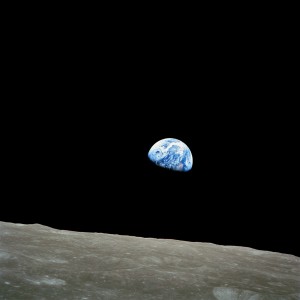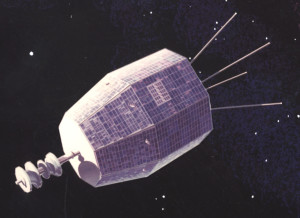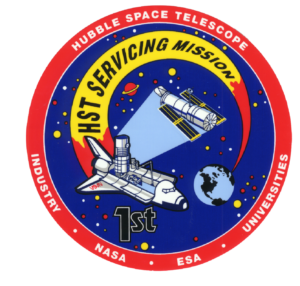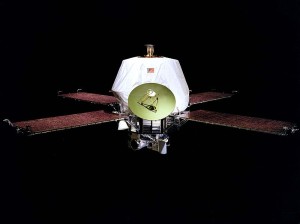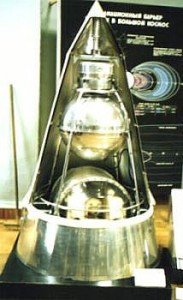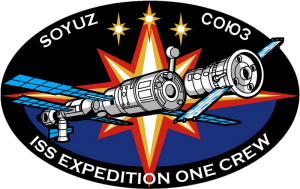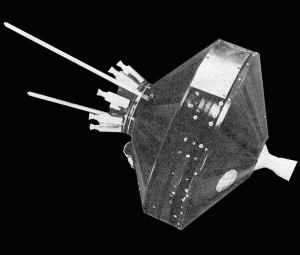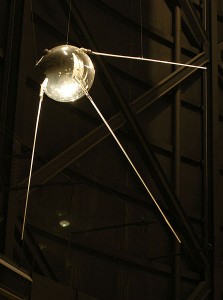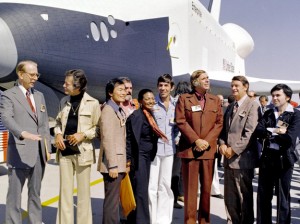Space Exploration
First Men to Orbit the Moon
December 23, 1968
Astronauts Frank Borman, James A. Lovell, and William Anders become the first men to orbit the Moon. Flying in Apollo 8, the men perform 10 total lunar orbits and test many of the procedures that will be used in future lunar missions. Additionally, the men were the first humans to travel beyond low Earth orbit, the first to see Earth as a whole planet, and the first to directly see the far side of the Moon. On Christmas Eve, the crew made a television broadcast from which they read the first 10 verses from the Book of Genesis. It was the most watched television program ever at the time.
Relay I Launched
NASA launches the active repeater communication satellite Relay I from Cape Canaveral. One of the earliest communication satellites to be launched, Relay I’s mission was primarily experimental, but it nonetheless was used for some notable events. On November 22, 1963 Relay I was the first satellite to broadcast television from the United States to Japan, which happened to be the announcement of the assassination of John F. Kennedy. It was then used in August of 1964 to broadcast the 1964 Summer Olympics from Japan to Europe and the United States, relaying the signal with another satellite, Syncom 3. It was the first time two satellites were used in tandem for a television broadcast. Relay I was used until February 10, 1965, when a problem with its power system caused the satellite to become non-functional.
Hubble Space Telescope Servicing Begins
The Space Shuttle Endeavour captures the Hubble Space Telescope to begin the first servicing mission of the flawed satellite. Over the next 5 days a variety of repairs and upgrades are completed, most notably the installation of the Corrective Optics Space Telescope Axial Replacement (COSTAR) and the Wide Field and Planetary Camera 2 (WFPC2) modules that together were able to compensate for the flaw in the Hubble’s main mirror. Once these corrections were made, the Hubble Space Telescope was, after 3 years, finally able to fulfill its promise of delivering detailed imagery that was not possible with Earth-based telescopes.
Mariner 9 Orbits Mars; First Spacecraft to Orbit Another Planet
NASA’s Mariner 9 reaches the planet Mars and becomes the first man-made object to orbit another planet. Mariner 8 was scheduled to be the first, however due to launch problems it failed to make it out of Earth’s atmosphere. The Soviet Mars 2 and Mars 3 space probes reached the planet on November 27 and December 2 respectively.
Mariner 9 completed its mission of photographing the surface of Mars, transmitting 7,329 images covering 100% of the planet’s surface. While out of fuel, Mariner 9 still orbits Mars to this day, expected to stay in orbit until about the year 2022 when it will enter the planet’s surface and either burn up or crash into the surface.
First Earthling Into Orbit
The Soviet Union launches Sputnik 2, the second spacecraft launched into Earth orbit and the first spacecraft to carry a living creature into orbit. Laika, a Siberian Husky dog, unfortunately only survived a few hours into the flight and died from stress and overheating. The Soviets had planned to euthanize Laika regardless, as Sputnik 2 did not have de-orbiting or reentry technology designed into the spacecraft.
First Crew to International Space Station
Russia launches Soyuz TM-31, carrying the first crew to the International Space Station. The ISS has been continuously manned since this first mission.
NASA’s First Launch
NASA launches Pioneer 1, the first spacecraft launched by the newly formed space agency. Originally intended to fly by the Moon, a launch malfunction due to a programming error caused Pioneer 1 to only attain a ballistic trajectory, which caused it to fall back to the Earth after 43 hours of flight. However, some useful scientific data was returned by the spacecraft.
Sputnik Launches the Space Age
The first man-made satellite to orbit the Earth, Sputnik 1, is launched from Baikonur, Kazakhstan, marking what is now considered the beginning of the Space Age. Surprising the world with its successful launch, Sputnik triggered the Space Race between the Soviet Union and United States ushering in an era of rapid advancement in the field of space exploration. After 3 months in orbit, Sputnik reentered the Earth’s atmosphere and burned up on January 4, 1958.
Galileo Completes Jupiter Mission
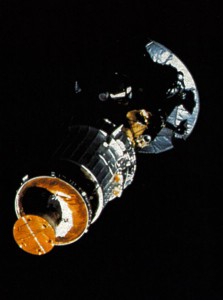
After fourteen years in space, eight of those as the first man-made object orbiting Jupiter, the unmanned NASA spacecraft Galileo is sent into the atmosphere of the giant planet. NASA decided to end Galileo’s mission in this manner in order to avoid any possibility of it colliding with one of Jupiter’s moons and potentially contaminating it with bacteria from Earth. How sanitary of them.
NASA Unveils Enterprise
NASA rolls out the first Space Shuttle, Enterprise, from its assembly facility to a waiting crowd. Included in the crowd was a delegation of actors from the Star Trek TV series. Originally to be named Constitution, a write-in campaign by Star Trek fans convinced President Gerald Ford and NASA to rename the Space Shuttle.
The Enterprise was a prototype shuttle, designed for the early testing phase of the Space Shuttle program. It was built without engines or a functional heat shield. While it performed various atmospheric test flights, and was originally intended to be retrofitted for spaceflight, it was determined that it would be less expensive to simply build new shuttles. Therefore the Enterprise never did actually fly into space.

